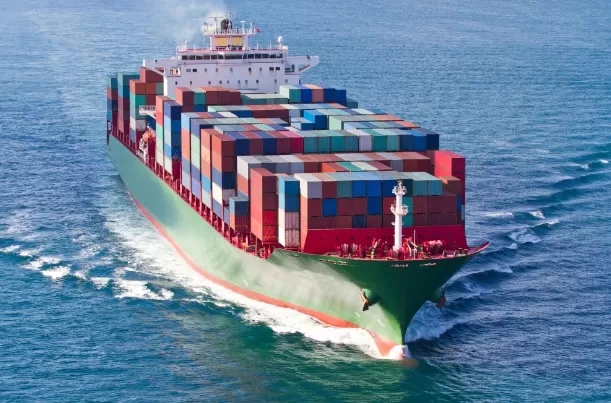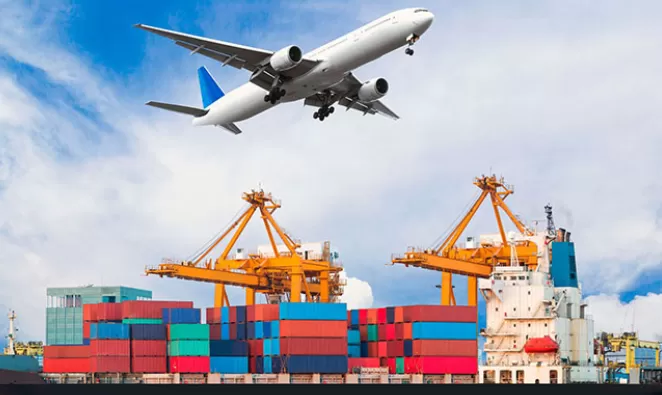use these when planning
Ocean (China → East Coast US) port-to-port: ~30–40+ days typical; door-to-door commonly 40–60+ days depending on origin, port choice and drayage.
Air freight door-to-door: ~5–10 days typical (includes origin handling, flight(s), customs & trucking). Express couriers: 2–4 days.
Sea-express (market premium ocean) shortens ocean leg by ~7–14 days vs standard ocean (varies by carrier/service). Treat it as “faster ocean” product — not as fast as air.
How to read each route
For each route below I give:
Common origin ports/airports used.
Legs with time ranges (best → conservative).
Typical total ETA (door-to-door) and recommended buffer for planning.
What commonly causes delays on each leg.
FBA tips where relevant.
AIR (two flavors: air-cargo and air-express courier)
Typical origin airports
Shanghai Pudong (PVG), Shenzhen (SZX), Guangzhou Baiyun (CAN), Beijing (PEK/PKX), Xiamen (XMN), Ningbo (via PVG or local air links).
Standard air-cargo lane: e.g., Shenzhen (SZX) → Washington D.C. area (via major gateway like IAD/JFK/ORD) → truck to DC
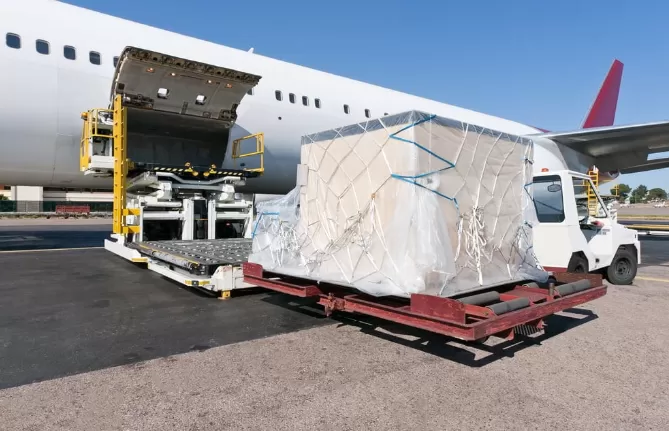
Legs & timings
Factory pickup → consolidation / palletizing at forwarder’s warehouse: 0.5 → 2 days (depends on factory readiness & volume).
Origin trucking to airport + acceptance / handling / customs export: 0.5 → 2 days (some forwarders do same-day acceptance; others require a day).
Flight time (air leg): 12 → 16 hours flight time to a US East-Coast gateway (non-stop freighter or belly space). If transship via another Asian hub add +0.5–2 days.
US airport handling / customs release / terminal pickup: 0.5 → 2 days (express clearance is faster; cargo holds or exam add time).
Trucking to DC (door): 0.5 → 2 days (depends on final address, appointment windows).
Typical total door-to-door: ~3 → 10 days (best 3–5 days, conservative 7–10 days). Freightos industry rule of thumb: air freight generally 5–10 days door-to-door.
Common delays & notes
Flight schedule gaps or lack of freighter space can add 24–72 hours.
Customs hold / missing paperwork adds 1–3 days.
Volume billing (volumetric weight) can make air very expensive—split urgent SKUs by air, rest by ocean.
FBA note
Air → FBA is ideal for urgent replenishment but ensure final warehouse acceptance windows and that U.S. broker pre-clears shipments to avoid delays. Pre-advise Amazon inbound and include FBA labels.
Air-express (courier: DHL / UPS / FedEx) — sample lane: Shanghai PVG → DC (door)
Legs & timings
Pickup from factory: same day → 1 day (couriers pick up quickly).
Origin processing & export: same day → 1 day.
Air leg / international flight: 1 day (overnight or same-day on express network).
Customs clearance (by courier) & last-mile: 1 → 2 days.
Door-to-door total: ~1 → 4 days (express). Freightos and industry calculators place express at 1–3 days typical.
Good for samples/returns/urgent replacement parts. For FBA: couriers can deliver to some FBA warehouses but check Amazon’s inbound routing rules and paperwork — many sellers still route courier → local prep center → FBA.
OCEAN (FCL and LCL) — core lanes and leg-by-leg times
Core origin ports we’ll use as examples: Shanghai (CNSHG), Ningbo (CNNGB), Yantian/Shenzhen (CNYTN), Qingdao (CNTAO), Xiamen (CNXMN), Guangzhou (CANGZ). Destination ports we focus on: Port of Baltimore (BAL) and NY/NJ (NYC/NJ) — both commonly feed Washington, D.C.
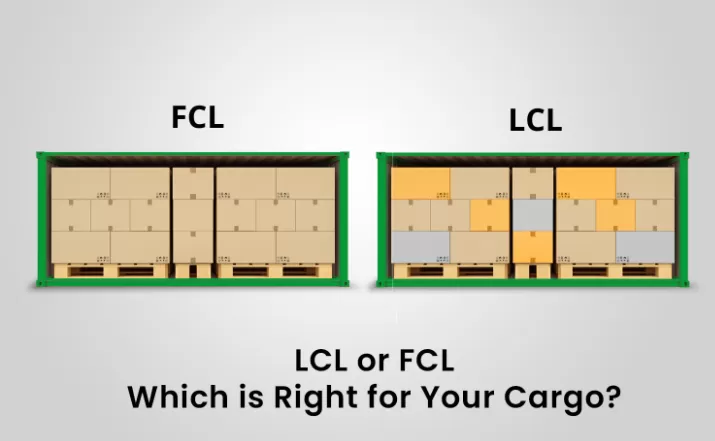
1) Shanghai (CNSHG) → Port of Baltimore (Seagirt / Dundalk) → DC warehouse
Legs & timings
Factory pickup & stuffing (container) / consolidation for LCL: 1 → 3 days (inspection, palletizing, stuffing).
Truck to Shanghai port / terminal cut-in / VGM & carrier cut-off window: 0.5 → 3 days (if you miss VGM cut-off you miss the sailing).
Export customs & terminal handling / vessel loading: 0.5 → 3 days (depending on sailings frequency).
Ocean voyage (Shanghai → Baltimore): ~35 → 38 days port-to-port is a realistic average for direct/east-bound services; some routings with transship add a few days. (Point estimates: SeaRates, FluentCargo, shipping schedule tools show ~37 days shortest examples).
Discharge, destination terminal handling & customs inspection: 1 → 4 days (inspections or congestion extend this).
Drayage from Baltimore terminal → DC warehouse / FBA prep: same day → 1–3 days (short haul but subject to chassis/appointment availability; drayage.com shows real-world quotes vary widely).
Typical door-to-door: ~40 → 55+ days. Recommend planning +7–14 days buffer for dom. handling / seasonal peaks.
FCL vs LCL notes
FCL: fewer touchpoints → lower damage risk; VGM and return rules apply.
LCL: consolidation/deconsolidation steps add +3–7 days on top of port-to-port transit and more handling risk.
FBA note
For FBA small sellers, beachhead strategy: use FCL when volumes justify. LCL and consolidated sea-express can work for smaller replenishment but check who handles FBA prep and palletization at destination.
2) Yantian (Shenzhen) → NY/NJ → truck/rail → Washington, D.C.
Legs & timings
Factory pickup / consolidation: 1 → 3 days.
Truck to Yantian container terminal / cut-in: 0.5 → 2 days.
Export customs & vessel loading: 0.5 → 3 days.
Ocean voyage (Yantian → New York): ~32 → 36 days port-to-port (some fast loops show ~32 days as shortest examples).
Unload & customs in NY/NJ: 1 → 4 days.
Rail or truck from NY/NJ to DC:
Truck: drive 3–8 hours depending on traffic; operationally allow same day → 1 day for delivery to DC warehouse after pickup.
Rail + dray: may take 1 → 3 days depending on departure windows and intermodal ramps.
Typical door-to-door: ~38 → 52 days (slightly faster port transit may offset longer inland transit).
Delay causes & tips
NY/NJ congestion and volume peaks add customs and terminal dwell delays. Choose rail if cost-sensitive and time allows; choose truck/dray for faster door delivery.
3) Ningbo / Qingdao / Xiamen → East Coast (Baltimore / NY / Norfolk)
Leg summaries mirror Shanghai/Yantian lanes: factory pickup 1–3 days → port cut-in 0.5–3 days → ocean voyage 32–38 days → destination handling 1–4 days → dray 0.5–3 days. Use shipping schedules for exact vessel durations; Flexport/Freightos schedule tools provide lane-specific options.
SEA-EXPRESS (ocean express) — lane timings & where it fits
What it is (short): a premium ocean product with faster port rotations, priority stowage and sometimes direct strings that reduce transshipments. Not standardized — sold by carriers/forwarders as a premium SLA.
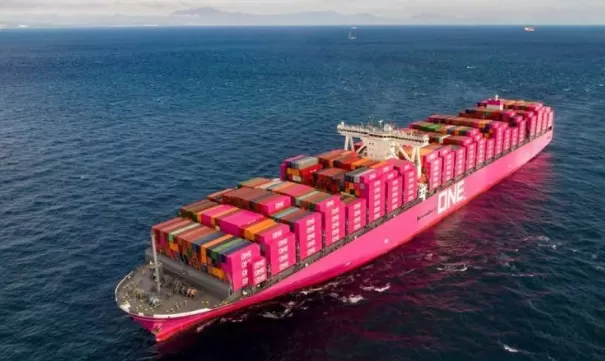
Example lane: Yantian → NY → truck → DC using sea-express
Legs & timings
Pickup & origin handling: 1 → 3 days.
Origin cut-in & prioritized loading: 0.5 → 2 days (often faster than standard consolidation).
Ocean voyage (sea-express service): ~18 → 28 days port-to-port depending on route & skipped port calls — typical saving vs standard ocean. (Industry practice and carrier product descriptions; exact days vary by string).
Destination handling & customs: 1 → 3 days.
Drayage to DC: same day → 2 days.
Typical door-to-door: ~25 → 38 days.
When to use
FBA replenishment with tighter windows where air is unaffordable. Use sea-express for time-sensitive restock and when forwarder guarantees space/schedule.
Caveat
Monitor premium surcharges and capacity; sea-express has limited capacity compared to mainstream sailings.
SEA + TRUCK — hybrid last-mile routing and timing
Definition: ocean leg to a strategic port (often closer to destination), followed by long-haul trucking (or intermodal rail+truck) to final delivery. Often used to shorten overall door delivery compared with all-water loops that call many ports.
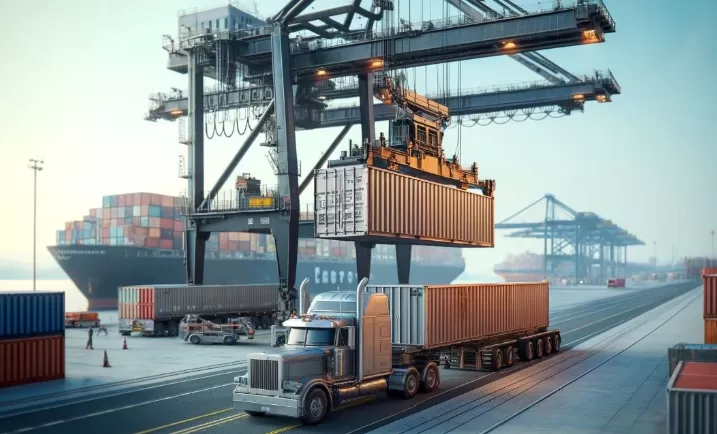
Example: Shanghai → Savannah → truck/rail → Washington, D.C.
Legs & timings
Pickup & origin handling: 1 → 3 days.
Ocean leg to Savannah: ~33 → 38 days (varies by string; some ocean legs to Savannah are competitive).
Terminal discharge & customs: 1 → 3 days.
Long-haul truck/rail to DC:
Truck: typically 1 → 2 days depending on distance & schedule.
Rail + dray: 2 → 4 days depending on rail schedules and ramp availability.
Door-to-door total: ~37 → 50 days.
Why use sea+truck
If Baltimore sailings are limited, or Savannah/Norfolk have cheaper ocean rates — sea+truck lets you pick the cheapest ocean leg while keeping final delivery time reasonable. But add dray/rail pricing complexity.
DOOR-TO-DOOR vs PORT-TO-PORT — operational timing differences
Port-to-port (seller responsibility ends at origin port)
Buyer handles dest. clearance & drayage. Time: origin handling → ocean leg → dest terminal. Door-to-door time is port-to-port + buyer’s local handling/delivery time (add 1–4 days typical).

Door-to-door (forwarder handles everything)
Forwarder provides single SLA; includes origin pickup, export clearance, ocean/air leg, destination clearance, drayage and final delivery. Total time identical to above but buyer doesn’t manage local steps — use this for FBA small sellers or those without local US logistics.
Practical timing difference: if you choose port-to-port and you or your local agent is slow, you can add +3–7 days in practice vs a competent door-to-door forwarder.
Amazon FBA small-seller special considerations (timings & operational steps)
Amazon adds several time factors that need extra buffer:
FBA appointment scheduling: FBA receiving appointments can be same day to 3+ days after arrival depending on slot availability; some forwarders handle appointment booking (door-to-door with FBA service saves time).
FNSKU labeling / carton prep: if not done in China, add 2–5 days for pallet build & labeling at a US prep center. Better: have forwarder or 3PL do FBA prep as part of door-to-door quote.
Customs broker release & pickup: allow 1–3 days after vessel arrival for clearance unless pre-cleared/broker ready.
Example: Sea-express LCL (recommended for many FBA small sellers)
Total door-to-FBA inbound (example): ~28 → 40 days (sea-express ocean + quick deconsolidation + FBA prep + appointment). This is why sea-express is the balance between cost and speed for FBA replenishment.
Practical FBA planning rule
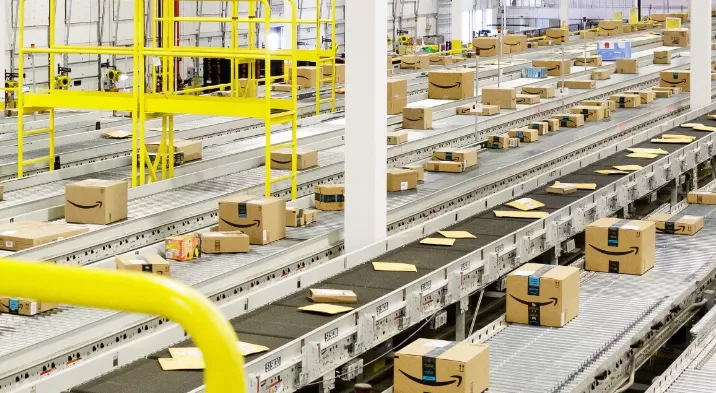
For steady sellers: set reorder point using lead time = (sea-express transit median) + customs + FBA prep + safety buffer. Example: if sea-express median = 25 days, customs+prep=7 days, buffer=7 days → reorder lead time = 39 days.
Common delay causes (across all modes) — plan for them
Missed carrier cut-offs or VGM deadlines → miss a sailing.
Port congestion / terminal labor actions → +2–7 days.
How can I verify a forwarder is trustworthy? (Our definitive guide to vetting) → +1–10 days.
Peak seasons (pre-holiday / Lunar New Year / Q3–Q4 build) → longer booking lead times & possible blank sailings. Reuters and industry reports show peaks create rapid spot index swings.
Quick reference cheat-sheets (copy into your SOP)
If you need stock in < 7 days
Use air-express (DHL / UPS / FedEx). Door-to-door 1–4 days.
If you need stock in 7–20 days
Air cargo (palletized) — 5–10 days; or mix: small urgent SKUs via air, rest by sea-express.
If you need stock in 20–40 days
Sea-express / premium LCL — ~25–38 days door-to-door (good balance for FBA replenishment).
If you need stock in 40+ days and want cheapest
Standard ocean FCL/LCL — ~40–60+ days door-to-door.
TL;DR lane examples (one-line summaries)
Shanghai → Baltimore (FCL): door-to-door ~40–55+ days (pickup 1–3d → port cut-in 0.5–3d → ocean 35–38d → customs 1–4d → dray 0.5–3d).
Yantian (Shenzhen) → NYNJ → truck → DC (FCL/LCL): door-to-door ~38–52 days (ocean 32–36d + local moves).
Shenzhen → DC by air (cargo): door-to-door ~3–10 days (pickup 0.5–2d → flight 12-16h → customs 0.5–2d → truck 0.5–2d).
Sea-express option (Yantian → NY → DC): door-to-door ~25–38 days (premium ocean service saves ~7–14 days vs standard ocean).
What I recommend you do next (actionable)

Decide target SLA (how many days you can wait). Use the TL;DR table above.
If FBA — require forwarders to quote door-to-FBA with itemized lines: ocean/air, origin local, destination THC, customs brokerage, drayage, FBA prep/labeling, and appointment fees.
Get 2–3 live quotes and ask each provider for a detailed timeline with vessel/flight numbers and cut-offs. Use Freightos / Flexport / carrier scheduling tools to compare lane-specific transit times.
Full landed-cost breakdown — what to expect (and three practical examples)
Cost components (must-ask items)
Ocean/Air freight base rate
BAF / CAF / PSS / Peak season surcharges
Terminal handling charges (origin & destination)
Customs brokerage fee & duty/tariff (see tariffs below)
Drayage (port to warehouse) & chassis fees
Port storage / demurrage / detention (if delays)
Inland trucking/rail to final delivery (door)
Insurance & trade compliance services
FBA prep, labeling and warehouse fees (if using prep service)
Scenario A — Sample / urgent part (2–10 kg)
Mode: Air express (DHL)
Estimate: parcel rate (example): $30–$200 depending on weight/size and value. Use courier quote.
Time: 2–4 days door-to-door.
Scenario B — Replenish for FBA, medium urgency (LCL or sea-express)
Mode: Sea-express LCL / consolidated sea-express door-to-door
Example estimate (illustrative): $500–$1,500 total per cubic meter landed, depending on season and fees. Get itemized quote: consolidation fee + origin local charges + ocean + dest THC + drayage + customs brokerage + last-mile.
Scenario C — Large batch (FCL 20′ / 40′)
Mode: FCL ocean + port of arrival (Baltimore) + drayage to DC warehouse
Example estimate (illustrative): 20′ door-to-door $2,200–$5,000+; 40′ and higher accordingly. These are market examples — heavy season and index swings move these numbers quickly.
Rule: label numbers as example estimates and always request a live, itemized quote. Market volatility (tariff events, peak season, geopolitics) can change rates quickly.
Customs, tariffs & documentation — what will actually stop your shipment
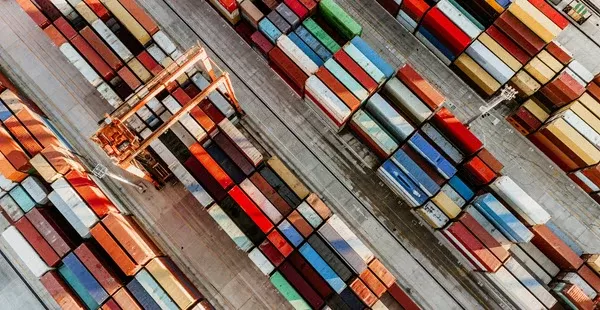
Key documents:
Commercial invoice (accurate HS code + description + value)
Packing list (detailed weights, dimensions, palletization)
Bill of Lading (ocean) / AWB (air)
ISF (Importer Security Filing) for US ocean imports — file early or face penalties
FDA/USDA permits if regulated goods (food, cosmetics, some supplements)
FNSKU, labels and packaging documentation for Amazon FBA units.
Tariff & duty math (brief):
Duty is calculated on the customs value, then additional tariffs (Section 301 etc.) may apply depending on product classification. Always compute cumulative duty (base duty + any anti-dumping / special tariffs). Freightos has a practical walk-through on tariff stacking.
Practical compliance checks:
Classify goods with a customs broker before shipping.
Ensure FNSKU labels can be scanned (Amazon rule) and do not conflict with other barcodes.
Pre-file any special permits weeks in advance.
Decision tree + recommended workflows for Amazon FBA small sellers
If you need stock in <20 days → Air freight (or express for <7 days).
If you need stock in 20–35 days and want lower cost → Sea-express (preferred for steady replenishment).
If you’re building inventory with >45 days lead time → Standard ocean FCL (most economical).
If you don’t manage US last-mile → Door-to-door service with an FBA-experienced forwarder (they handle labeling, pallet build and FBA check-in).
Pro tip: split replenishment—send a small, urgent air shipment for fastest-selling SKUs and rest by sea-express to manage cashflow.
Seasonality, market volatility & how to mitigate risk
Shipping rates and capacity spike around Q3 (pre-holiday) and Lunar New Year. Recent market data shows rapid swings in spot rates; monitor indices and book earlier when possible.
Mitigation tactics: early booking (6–10 weeks), use sea-express for schedule certainty, diversify ports (Baltimore vs NY/NJ), and always ask for all-in quotes.
FAQ
1. How can I verify a forwarder is trustworthy?
Check licenses and memberships (IATA for air, FMC/FF for ocean where applicable), request at least three client references, review recent proof-of-delivery scans, confirm cargo insurance limits, and ask for their claims history. Verify physical offices and ask for sample HBL/AWB they issued.
2. Which shipping documents must I archive and for how long?
Keep commercial invoices, bills of lading/AWB, customs entries, ISF filings, insurance policies, payment receipts and claim correspondence. Retain records for at least 5 years for audit and duty-reconciliation purposes; regulated goods may require longer retention.
3. What exactly should my RFQ include to make quotes comparable?
Include HS code, INCOTERM, exact dims/weights, palletization, preferred cut-off/date range, FBA requirements (if any), origin address, hazardous status, required services (insurance, customs brokerage), and a request for an itemized cost breakdown with validity period.
4. When and how should I buy cargo insurance?
Buy before cargo departs origin. Opt for “all-risk” coverage quoting CIF value (goods + freight + duty) and confirm named insured, deductible, claim process and surveyor contacts. Require confirmation of coverage limits and sub-limits in writing before booking.
5. How do I avoid demurrage and detention charges?
Negotiate realistic free time, monitor vessel/terminal notices, pre-book truck appointments, return empties promptly, and have a contingency plan (alternate chassis provider or temporary storage). Budget a small contingency in quotes for terminal slowdowns.
6. What’s the easiest, lowest-risk way to handle FBA labeling?
Have the factory apply FNSKU labels under strict QC, send pre-production label samples, and require photos of labeled cartons before stuffing. As backup, contract a US prep center to relabel on arrival to avoid inbound refusals.
7. Should I choose DDP or DAP for small cross-border sellers?
Choose DDP for simplicity and predictable landed costs if willing to pay a premium. Choose DAP if preferring control over customs clearance, willing to manage a US broker, and seeking lower upfront cash outlay. Match choice to cashflow and local capability.
8. How to minimize customs inspection risk for regulated items?
Pre-classify with a customs broker, secure required permits/certificates (FDA, USDA, etc.) before shipment, include detailed product specs and lab tests in the files, and provide documentary proof to the broker for pre-clearance.
9. Which KPIs demonstrate a forwarder is performing well?
Track OTIF (on-time, in-full), average transit variance versus quoted ETA, dwelling time at origin/destination, claim frequency and resolution time, landed cost variance, and quote-to-book lead time. Benchmarks allow quick performance comparisons.
10. What is the fastest way to file and resolve a cargo claim?
Preserve all packing and photos, note timestamps, notify the carrier and insurer immediately, secure a surveyor if required, submit an itemized claim packet (invoice, B/L, packing list, photos), and follow up weekly until settled. Keep claims separate from commercial disputes.
Exploring Other Key US Logistics Hubs?
Learn more: Shipping from China to Los Angeles
Learn more: Shipping from China to Chicago
Learn more: East Coast Shipping Overview

 EN
EN
 FR
FR
 ES
ES
 JA
JA
 PT
PT
 RU
RU
 AR
AR
